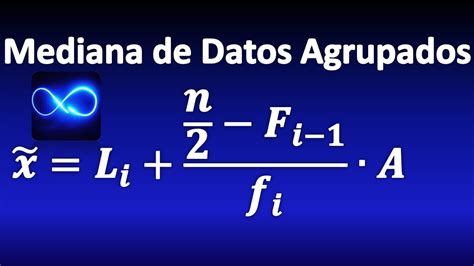Mastering Excel: Average Formula Tricks

Excel is an incredibly powerful tool for data analysis and management, and understanding its formulae is crucial for anyone looking to harness its full potential. Among the myriad of functions available, the average formula is one of the most commonly used and versatile. This article will delve into the depths of this formula, exploring its intricacies, practical applications, and little-known tricks to help you become a true Excel master.
Unveiling the Average Formula

At its core, the average formula in Excel is a simple yet indispensable function that calculates the arithmetic mean of a range of cells. The basic syntax is straightforward: =AVERAGE(number1, [number2], …), where number1 is the first cell reference or value, and [number2] are optional additional cell references or values. However, this formula is capable of so much more when you explore its various features and applications.
Practical Applications of the Average Formula
The average formula finds its utility in numerous real-world scenarios. For instance, in a sales report, you can quickly calculate the average sales per month by selecting the range of cells containing monthly sales figures and applying the AVERAGE function. This not only saves time but also provides a quick snapshot of your business’s performance.
Furthermore, when dealing with large datasets, the average formula can be combined with other functions to provide powerful insights. For example, you can use the AVERAGEIF or AVERAGEIFS functions to calculate the average of a range of cells based on certain criteria. This allows you to segment your data and gain a deeper understanding of specific subsets.
Little-Known Tricks with the Average Formula
While the average formula is straightforward, there are several lesser-known techniques that can significantly enhance its usability and power.
- Ignoring Errors and Blank Cells: By default, the
AVERAGEfunction ignores any text or non-numeric values in a range. However, it does not ignore blank cells or errors. To ensure your average calculation is accurate, you can use theAVERAGEAfunction, which treats blank cells as zeros and errors as zeros or other specified values. - Weighted Average: In certain scenarios, you might want to give more weight to certain values in your average calculation. The
SUMPRODUCTfunction, when combined with theAVERAGEfunction, can achieve this. For example,=AVERAGE(SUMPRODUCT(range1, weights)) / SUM(weights)calculates the weighted average, whererange1contains the values andweightscontains the corresponding weights. - Averaging Cells Based on Criteria: As mentioned earlier, the
AVERAGEIFandAVERAGEIFSfunctions allow you to calculate the average based on specific criteria. For example,=AVERAGEIF(range, criteria)calculates the average of cells inrangethat meet thecriteria. You can also use multiple criteria with theAVERAGEIFSfunction. - Using Named Ranges: Assigning names to cell ranges or formulas can make your formulas more readable and easier to manage. For instance, if you have a range of cells named
SalesData, you can use=AVERAGE(SalesData)instead of referencing individual cells.
Real-World Scenarios and Case Studies

To illustrate the power of the average formula, let’s explore some real-world scenarios and case studies.
Scenario: Analyzing Student Performance
In an educational context, teachers often need to analyze student performance. The average formula can be used to calculate the average scores of students in various subjects. For example, if you have a dataset with student names and their scores in different subjects, you can use the AVERAGE function to find the average score for each student across all subjects.
| Student | Math | Science | Language | Average |
|---|---|---|---|---|
| Alice | 85 | 92 | 78 | 85.33 |
| Bob | 72 | 80 | 65 | 72 |
| ... | ... | ... | ... | ... |

In this table, the Average column is calculated using the =AVERAGE(Math, Science, Language) formula.
Case Study: Financial Analysis
In the world of finance, average calculations are frequently used for various purposes. For instance, a financial analyst might use the average formula to calculate the average daily return of a stock over a period. By selecting the range of cells containing the daily returns and applying the AVERAGE function, the analyst can quickly assess the stock’s overall performance.
| Date | Daily Return |
|---|---|
| 01/01/2023 | 0.02 |
| 02/01/2023 | -0.01 |
| 03/01/2023 | 0.03 |
| ... | ... |
| Average Daily Return | 0.015 |
In this table, the Average Daily Return is calculated using the =AVERAGE(Daily Return) formula.
Advanced Techniques and Tips
To take your Excel skills to the next level, here are some advanced techniques and tips related to the average formula.
Combining Average with Other Functions
The average formula can be combined with other functions to perform more complex calculations. For example, you can use the SUM function along with AVERAGE to find the total and average of a range of cells simultaneously. This is particularly useful when you need to analyze both the sum and the average of a dataset.
Using Excel’s Data Analysis Tools
Excel’s Data Analysis Toolpak provides a set of statistical functions, including average calculations. This tool can be especially helpful when dealing with large datasets or when you need to perform more advanced statistical analyses. To access these tools, go to the Data tab and select Data Analysis. Here, you’ll find functions like Descriptive Statistics, which can provide not only the average but also other statistical measures like standard deviation and median.
Creating Dynamic Average Calculations with VBA
For more advanced users, Excel’s Visual Basic for Applications (VBA) can be used to create dynamic average calculations. VBA allows you to automate tasks, create custom functions, and interact with Excel’s objects. By writing VBA code, you can create user-defined functions that can perform average calculations based on specific criteria or dynamically changing data ranges.
Future Implications and Best Practices
As data analysis becomes increasingly important across various industries, the average formula and its applications will only grow in significance. Here are some future implications and best practices to consider.
Adopting Data-Driven Decision-Making
In today’s data-rich environment, businesses and organizations are increasingly turning to data-driven decision-making. The average formula, along with other statistical functions, plays a crucial role in this process. By regularly analyzing and interpreting data, businesses can make informed decisions, optimize processes, and stay ahead of the competition.
Best Practices for Average Formula Usage
- Data Cleaning: Before applying any formula, ensure that your data is clean and free from errors or inconsistencies. This includes removing duplicates, correcting typos, and handling missing values appropriately.
- Using Named Ranges: As mentioned earlier, named ranges can make your formulas more readable and easier to manage. They also reduce the risk of errors caused by incorrect cell references.
- Documenting Your Work: Documenting your formulas and calculations is essential for future reference and collaboration. Use comments, notes, or even separate documentation to explain your methodology and assumptions.
- Regularly Updating and Reviewing: Data and business environments are dynamic, so it’s crucial to regularly update and review your average calculations. This ensures that your analyses remain accurate and relevant.
Conclusion

The average formula in Excel is a powerful tool that, when combined with other functions and techniques, can provide valuable insights from your data. By mastering this formula and its applications, you’ll be well-equipped to tackle a wide range of data analysis tasks. Whether you’re a student, a financial analyst, or a business professional, Excel’s average formula is a fundamental skill that will serve you well in your data-driven endeavors.
Can I use the average formula with non-numeric data?
+No, the AVERAGE function in Excel is designed to work with numeric data only. It will ignore text or non-numeric values in a range. However, you can use the AVERAGEA function, which treats blank cells as zeros and errors as zeros or other specified values, allowing you to calculate averages with non-numeric data.
How can I calculate the average of a range of cells excluding certain values?
+You can use the AVERAGEIF or AVERAGEIFS functions to calculate the average of a range of cells based on certain criteria. For example, =AVERAGEIF(range, criteria) calculates the average of cells in range that meet the criteria. You can also use multiple criteria with the AVERAGEIFS function.
What is the difference between AVERAGE and AVERAGEA functions in Excel?
+
The AVERAGE function calculates the arithmetic mean of a range of cells, ignoring any text or non-numeric values. On the other hand, the AVERAGEA function treats blank cells as zeros and errors as zeros or other specified values. This allows you to calculate averages with non-numeric data or when you want to include blank cells in your calculation.



